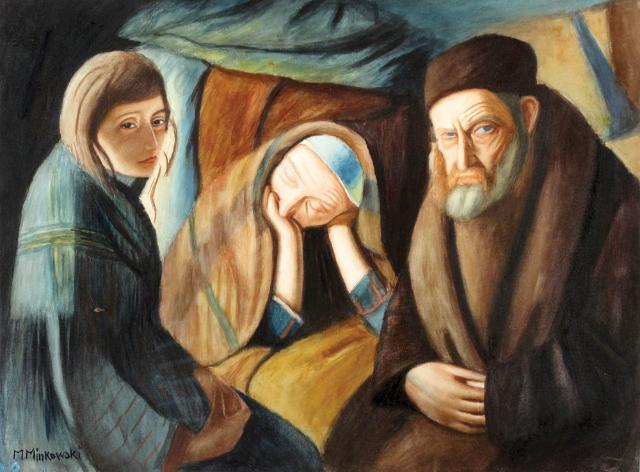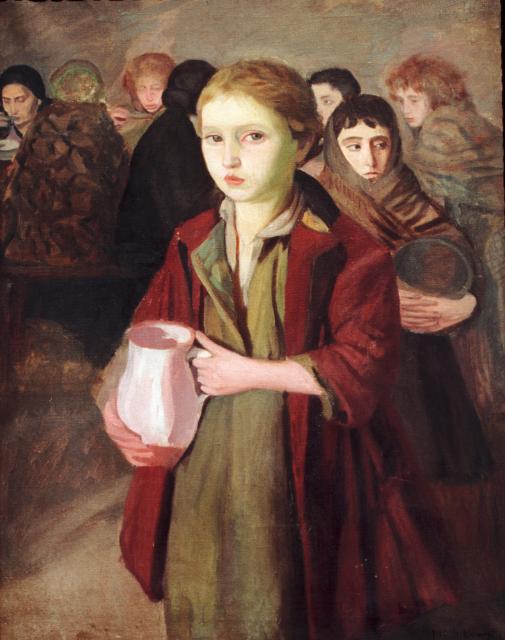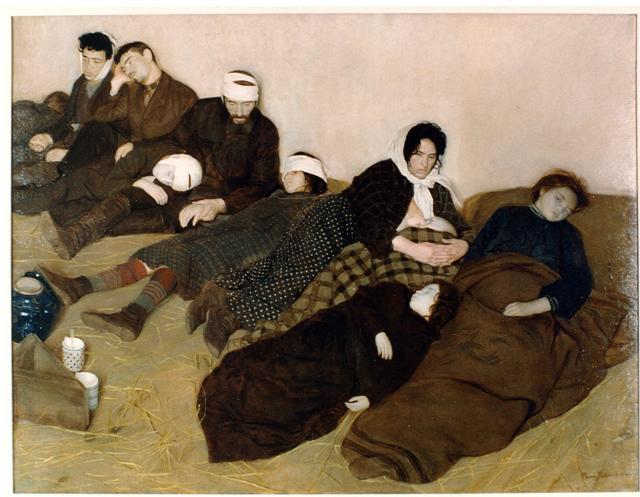Background
Maurycy Minkowski was born in Warsaw in 1881 to an upper middle class Jewish family. At the age of 5 he had an accident (according to some sources a disease) that left him deaf. Between 1900 and 1904 Minkowski studied fine arts at the Krakow Academy of Fine Arts. During the first years of his career as an artist he became a portrait and lanscape painter, but in 1905 everything changed.
1905 was a very significant year for this young artist's career. Shocked by a new wave of pogroms after a failed attempt of revolution against the Zarist government of Russia, the artist devoted his paintings to a new theme. In his canvases and watercolors Minkowski painted the life of the Jewish villagers in the Shtetls of Eastern Europe. He discovered a vanishing world, a traditional form of life that was threatened by the changes of modernity and accelerated by the terrible attacks, the pogroms, towards these poor communities.
Minkowski painted the professions, the women in the market, women in the synagogues, the Sabbath in the Jewish homes of the Shtetls, the brides and also large groups of refugees, of Jewish families that had to leave their hometowns because of the poverty and the pogroms.
During the 1920s Minkowski exhibited all around Europe and in 1930 he traveled to Buenos Aires, Argentina, with more than 100 paintings to exhibit at Gallery Müller in Florida Street. The show opened on September 25th, 1930. It was a success, as described in the local Spanish and Yiddish press. Yet he did not sell any painting. He had plans to paint the Jewish Gauchos and then continue his journey in the new continent to New York.
Only a few weeks after his arrival in Buenos Aires, Minkowski was hit by a taxi and died in this tragic car accident. This is the tragic end of the artist's life, and yet only the beginning of the oeuvre's history. The paintings were stored in Buenos Aires, and in 1945 moved for final custody to the I.W.O. when this institution was finally moving to the newly built AMIA at Pasteur street.
The IWO inaugurated a Jewish Museum with the name of Minkowski, and these works became part of the core collection. The works remained in that building until 1994, when the building of the AMIA was destroyed by the terrorist bombing attack on July 18th. A group of 800 volunteers saved the works and many other items from the IWO collection, including objects, books, papers, photographs and archival documents.







